Servi Group has a history dating back to its creation in 1912, although the story starts long before then. Our history shows that over 100 years we have kept much of the same values. Adaptability, innovative and solution-oriented are still values that describes us well.
Servi Group has roots all the way back to the Danish company Sophus Berendsen A/S, which was established in 1854. The company's success led to the establishment of new companies in Oslo, Stockholm and Helsinki in 1912. The Norwegian company was named Ingeniørforretning Atlas AS. Today the name is Servi Group.
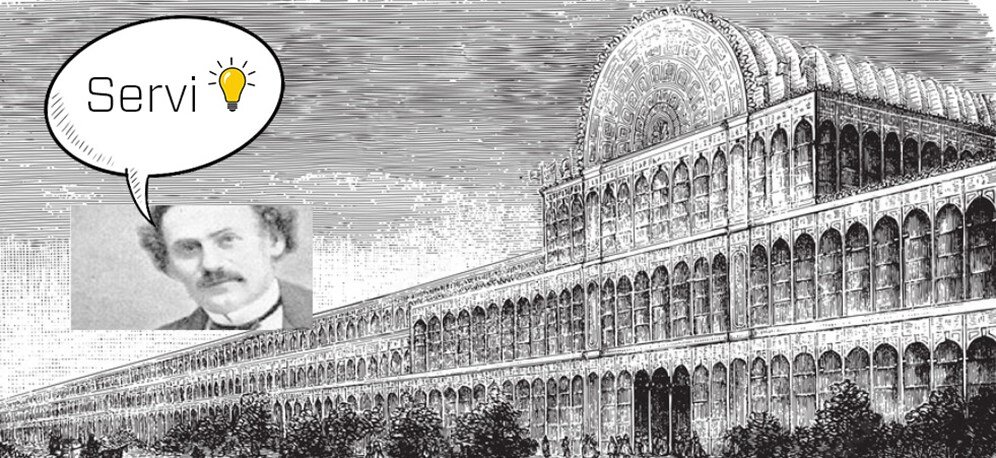
Sophus Berendsen's inspiration for the establishment of the company was the World's Fair in London in 1851 and especially of the newly built Crystal Palace in steel and glass. Steel and glass had to be the future!
Already then, the seed of innovation was sown. Perhaps this is the mentality that is the reason why we have survived all these years?

1968: Servi Group is the result of acquisitions of several companies. One of the companies was Cylinderservice A/S in Rissa. The company was established in 1936 and in 1956 they began producing hydraulic cylinders and accumulators.
Atlas was not originally involved in hydraulics. The business startet out with sale of technical products, particulay in machinery, equipment and components for ships and railways. Today we still sell components for ships, such as windscreen wipers and sliding bearings.
It wasn't until 1978 that we started with hydraulics. That is, we weren't quite fresh. Between 1988 and 2013 we acquired a number of companies, which gave us solid expertise in hydraulics – with roots dating back to 1947.
Our hydraulic expertise started with us bringing in some resources from Fridtjof Eitzen in 1978. Eitzen was one of the pioneers of hydraulics in Norway and one of the founders of Hydranor in 1962.
During the 80-90s, hydraulic expertise was rapidly developed, with Servi acquiring several companies. People in Servi are good friends today, but several of these have been fierce competitors before. Cylinderservice was a competitor with Vickers and Hydronic was a fierce competitor with several before being merged with Servi in 2005.
| NAME | JOINED SERVI | EXPERIENCE FROM | LOCATION |
| Sjong Hydraulikk | 1988 | ? | Oslo |
| Vickers | 1989 | 1947 |
Ski |
| Servi hydraulikk | 1992 | 1955 | Trondheim |
| Hydratek | 1994 | ? | Sandnes |
| Servi Technic | 2000 | 2000 | Ulsteinvik |
| Cylinderservice | 2002 | 1936/1956 | Rissa |
| Hydranor | 2012 | 1962 | Kongsberg |
| Hydronic | 2005 | 1979 | Asker |
| Offshore Hydraulics | 2013 | 2012 | Kristiansand |
This shows the hydraulic competence Servi has acquired over time. The sum of all the companies merged into one company has led to Servi being the market leader in hydraulics and pneumatics today.
Atlasgården: Konows gate 8 in Oslo, Servi Groups office before moving to Ski in 1989. In 1989 some of the workers of the American company Vickers joined the company.
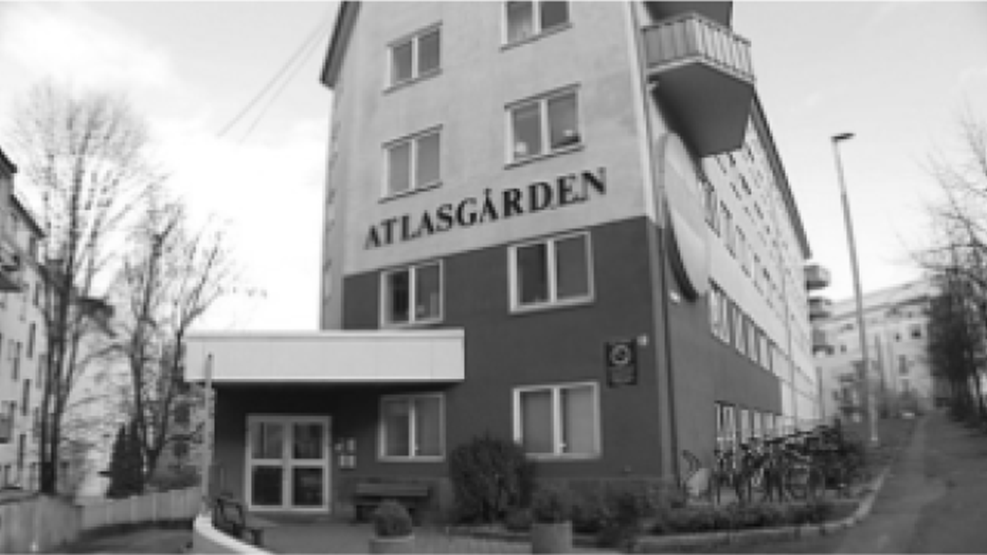
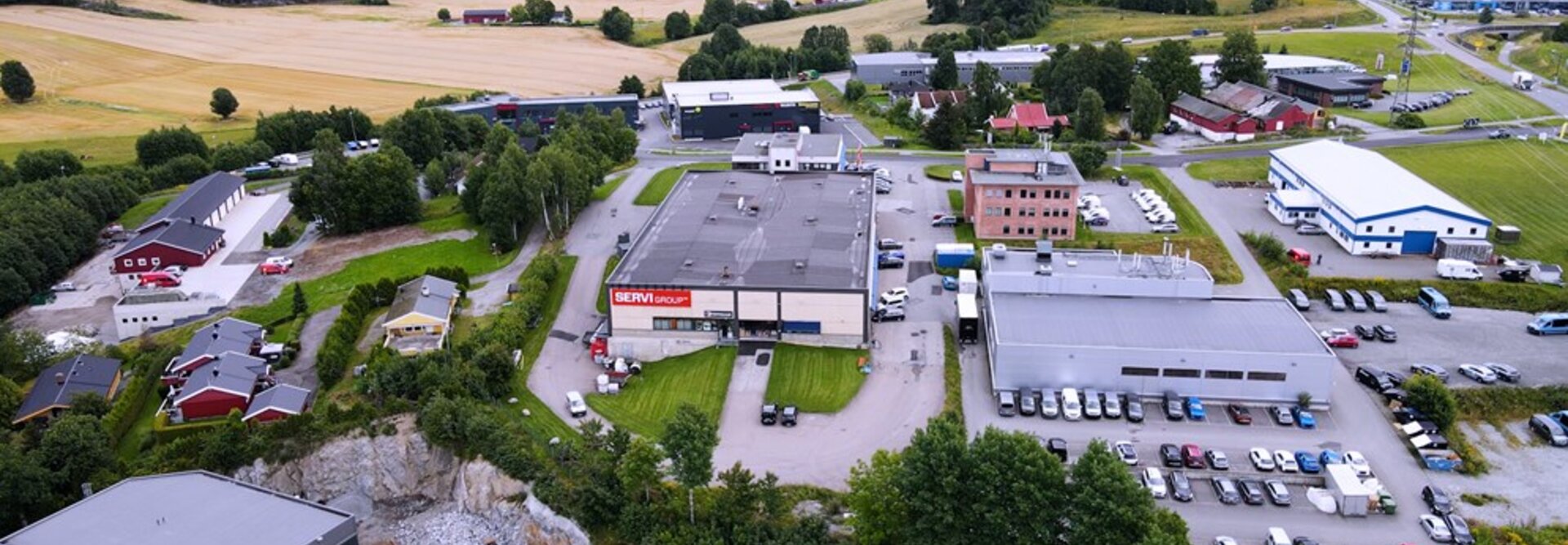
When the employees in Vickers' joined us, we moved into "hydraulic valley" at Ski. Several hydraulic companies were located in this area, including Parker and Rexroth.
"The people who started hydraulics in Norway" (1948): Here you can see A.M Eriksen – also known as Venditor. Venditor was the course of Vickers (the origin of several hydraulic companies.) Top from left: Rolf Henriksen, Eriksen, David Johansen (started Venditor), Christian Bodin, Knut Eibakk, Rolf Ødegaard, unknown, Arne Eibakk. Bottom from left: Zelker, Alfred Iversen, "Aunt" Elisabeth Ringstad, Ødegaard, Gunnar Dahl, Kjell Halvorsen and unknown.
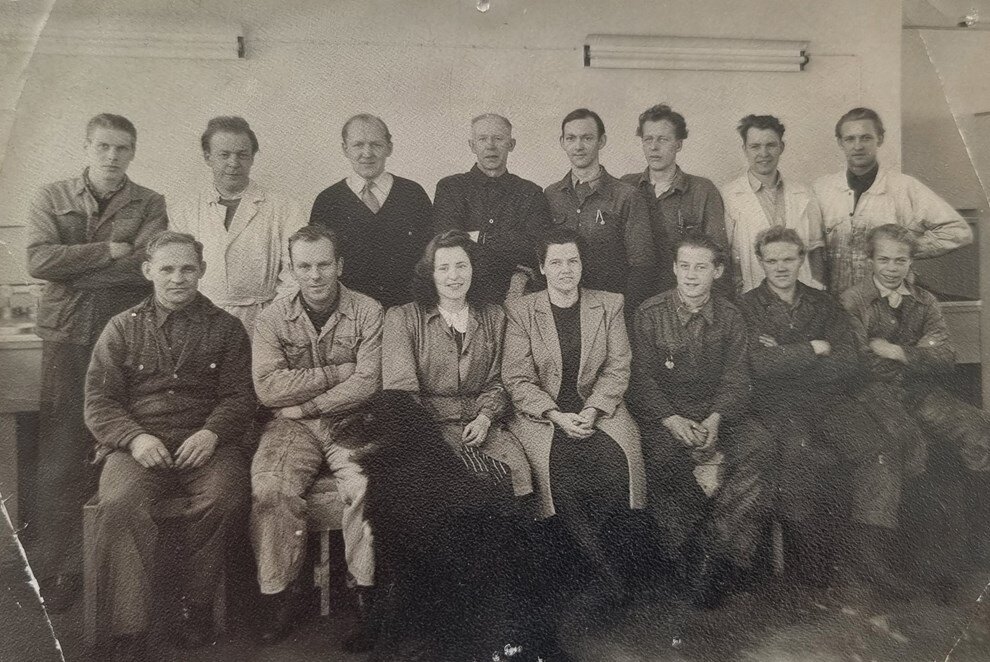
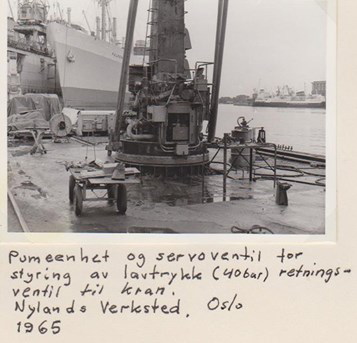
Our hydraulic expertise was further enhanced when we acquired Hydranor at Kongsberg in 2012 - a leading Nordic supplier of hydraulic high pressure valves and valve block solutions for the international ship and offshore market. The company was established in 1962, and pictured on the right you can see the products in use at Nylands Verksted in Oslo in 1965.
Much has changed since 1912. But in some areas, we are probably quite similar to the company that was founded at that time. At Servi, we have always been innovative and solution-oriented, we have shown the flexibility to adapt to a changing world and we work hard to deliver solid quality at all levels.
We have survived two world wars, the Spanish flu, the hard 30s, several financial crises and most close to us, the corona crisis. The ability to adjust is an important cue for why we still exist today.
In 1932, operations were reseating with more focus on agency business with commission and less on the sale of own stock. During The Second World War, two products were particularly important for the company's survival – steel pipes and steel beams. When the pandemic hit us in 2020, we made a number of changes, including using our expertise to create an emergency ventilator – a product we had never made before.
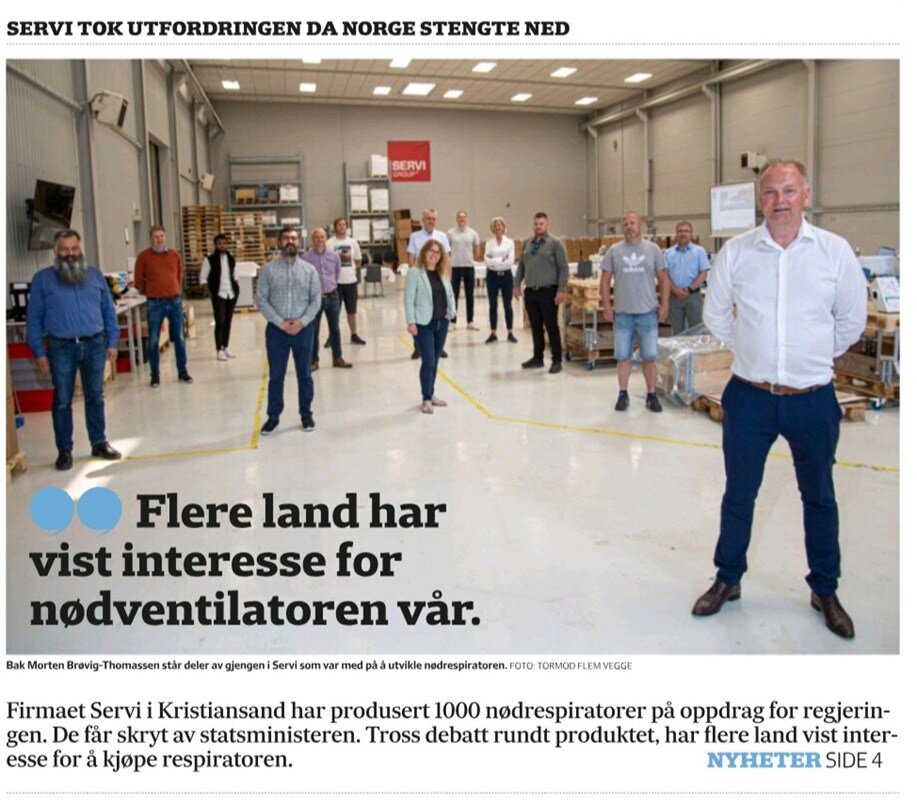
On the front page of Fædrelandsvennen 6 July 2021: Although medical equipment was a completely new field for us, we could use our expertise to contribute to emergency preparedness in March 2020.
The Norwegian investment company Ferd saw the value of all the expertise Servi had acquired in hydraulics, components and system integration and bought the company in 2013 – Here we got our name Servi Group AS, and new profile.
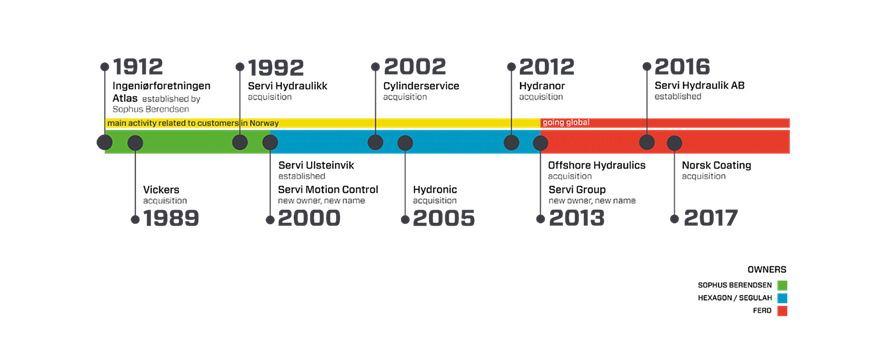
The illustration above shows acquisitions and ownership since its establishment in 1912.
Today we have departments in Ski, Kongsberg, Kristiansand, Stavanger, Bergen, Ulsteinvik, Trondheim and Rissa. We have long been Norway's largest supplier of hydraulics to the offshore and marine industries, in addition to the defense and onshore industries.
When society is now investing heavily in sustainable energy production, we take responsibility for a sustainable future by contributing to solutions that save energy and reduce emissions. We use our experience and expertise in new areas such as renewable energy such as offshore wind and hydropower. In addition, we invest heavily in energy-efficient solutions within aquaculture.
As Sophus Berentsen focused on innovative solutions in 1851 – with steel and glass, in 2022 we can deliver energy-efficient solutions to tomorrow's low-carbon society.
Where we are in 10 – 50 – 100 years, no one knows – but if we still exist, we are sure to produce innovative products for the future.